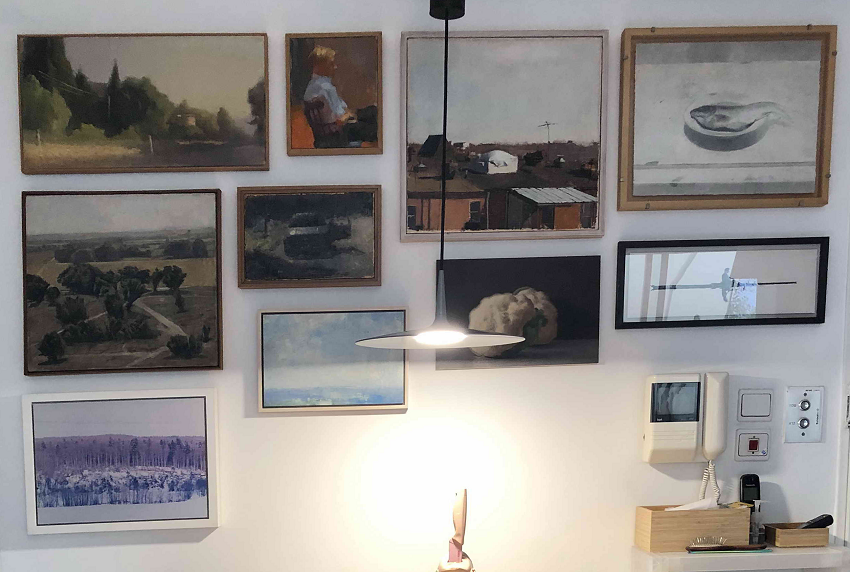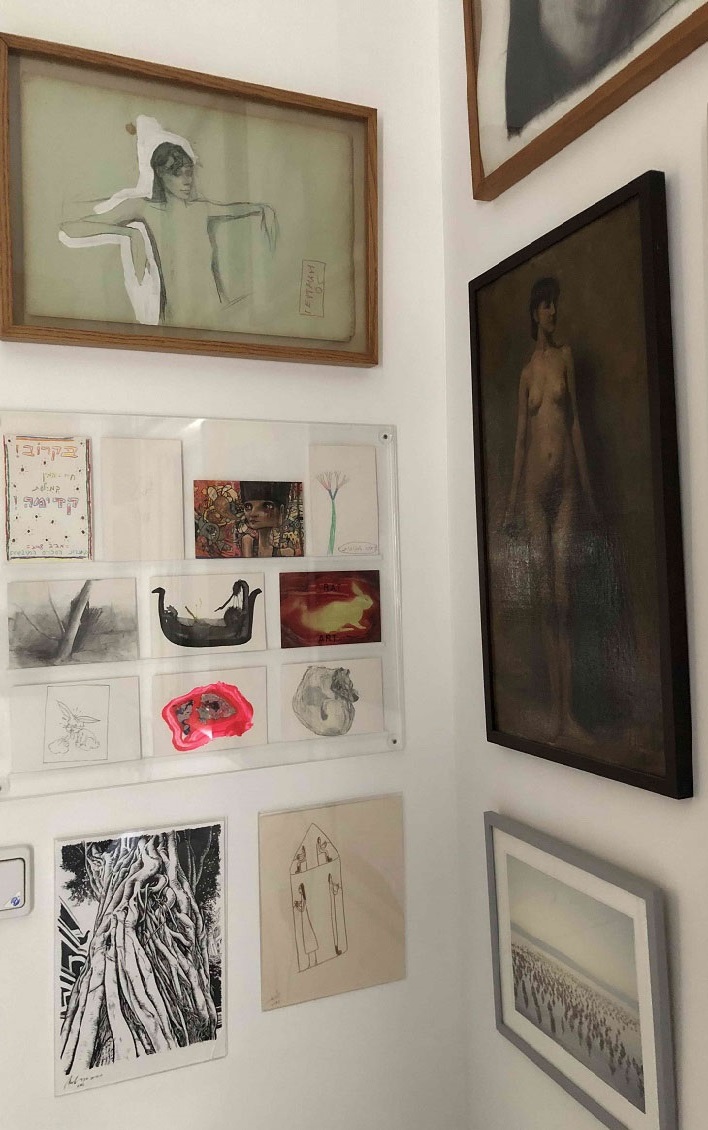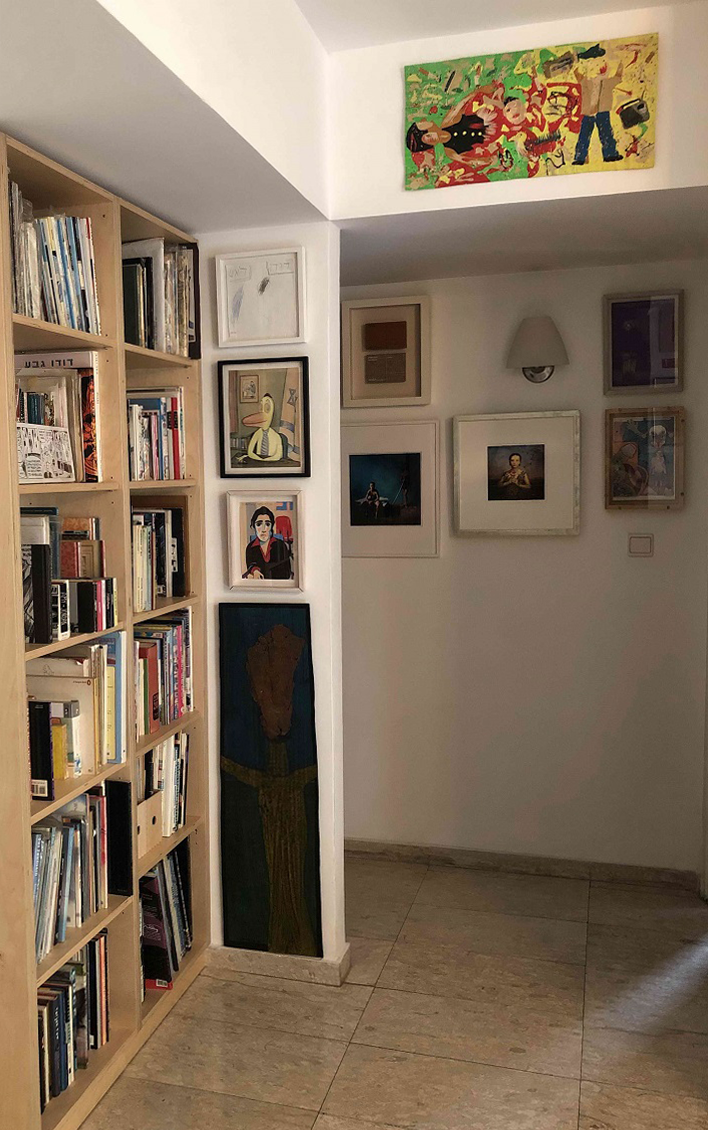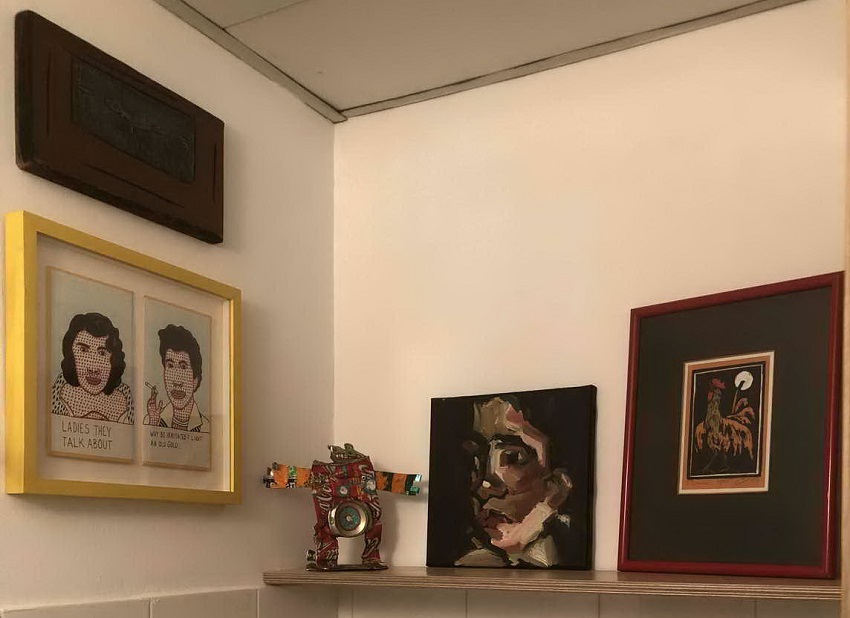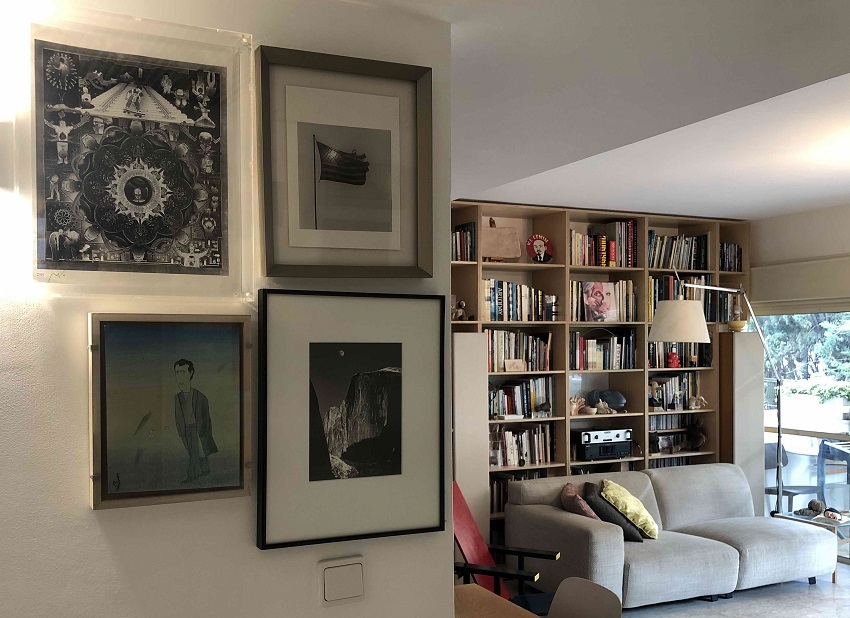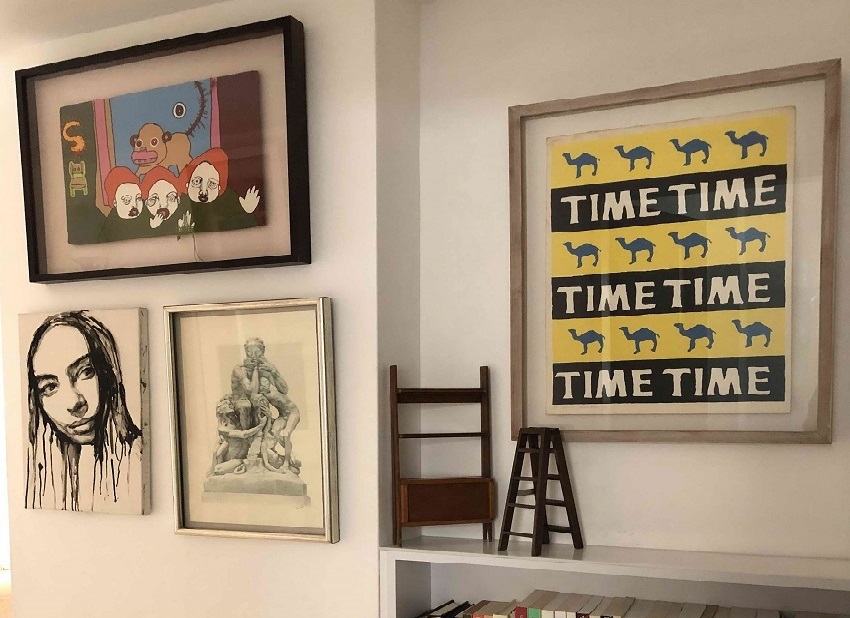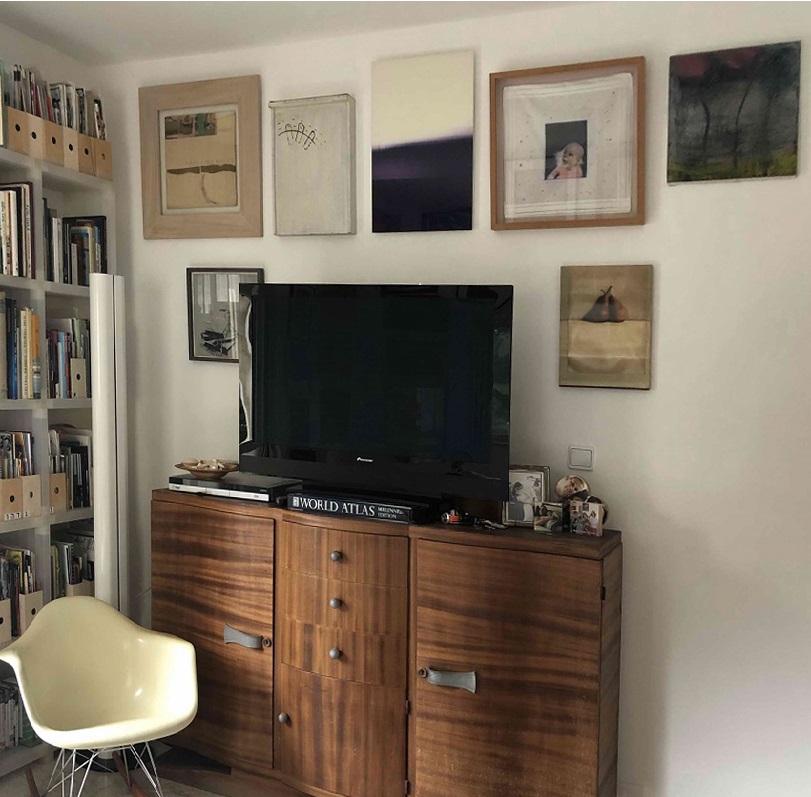THE BEGINNER’S GUIDE TO ART COLLECTING | DAVID & HADAS GLASSMAN
David and Hadas Glassman are a couple just like me and you, with no extraordinary wealth. Yet, they are seasoned and dedicated art collectors. We asked David to share with us their wonderful collection and the collecting philosophy behind it:
David: I grew up with art-loving parents who decorated the apartment walls with lots of artworks, hung with little spaces between them. My partner Hadas was raised in the same way, and to this day we both shy away from white empty walls that we sometimes see in homes and photographs of designed houses. This environment has cultivated our love for art and our aesthetic approach to displaying art at the home. When I started to live on my own in my early twenties, I knew that alongside the clichéd posters of the period (‘Mount Fuji and Flowers’ by David Hockney, and the De Stijl exhibition poster from The Israel Museum), the minute I could afford it I would purchase original art to hang on my walls.
The first artwork I purchased
The first artworks I purchased were a watercolor painting by Dudu Gerstein and a print by Uri Lifshitz, bought at a small auction in Jerusalem in the early eighties. I was a young collector then, with a limited budget (actually this has not changed to this day, apart from me being a little less young…). At the time I had already visited the mythological auctions of Gordon Gallery, but their prices were beyond my means. When I heard that a small art auction was taking place in my hometown, I went and luckily managed to purchase these two works. They are still in our collection, but it’s been a long while since they were hung on our walls.
Our collecting philosophy
The collection is my partner’s and mine: I started it almost four decades ago, and after I met my partner, twenty years ago, we continued collecting together. We share the love for art and each new piece we add to the collection is a result of a joint decision. The only artworks I ever sold from the collection were ones that I had already owned when I met Hadas. When she said she didn’t care for them I knew they had to go.
We have always purchased our art following several guiding principles:
- Financially, budgets were always limited. Therefore, the collection focuses mainly on small artworks in relatively accessible mediums.
- Ethically, when I started making connections in the art-world I noticed most of the gallerists I knew were well-off while all the artists I knew were struggling to make ends meet. I came to the conclusion that there was something flawed in the historic gallery model. That’s why we always preferred to purchase art directly from the artists and almost never through galleries. This direct process creates a personal connection with the artist, adding layers to the understanding and enjoyment that can be derived from the piece. Each artwork purchased in this manner turns from a mere artwork into an item that carries aesthetic, personal and emotional aspects, thus the ‘return’ from it is much greater.
- From a consumer standpoint, we try to be wise consumers in all domains. In the context of art collecting, we try to search for alternative channels for acquiring art. Public and charity auctions, art exhibitions (I believe we’ve purchased at least one artwork in every Freshpaint fair held to this day…), eBay and even flea markets, have all contributed to a significant part of our collection.
- The artworks in the collection represent various genres. As we are Israelis living in Israel, the vast majority of the collection is Israeli art, mostly contemporary art but also some modern pieces. We really appreciate realistic painting, and the collection also features photography, sculpture and illustration, as well as international art in each of these genres.
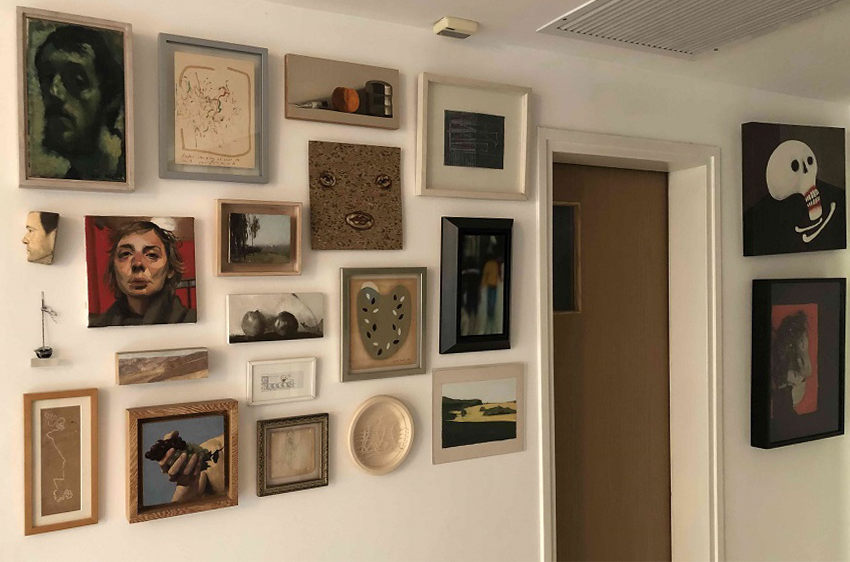
The artists in our collection
Among the prominent artists – in no particular order:
Contemporary Israeli: Zoya Cherkassky, Know Hope, Sigalit Landau, Yehudit Sasportas, Karen Russo, Hilla Ben Ari, Aya Ben Ron, Gil Shani, Khen Shish, Talia Sidi, Nir Hod, Yoav Efrati, Olaf Kühnemann, Zero Cent.
Modern Israeli: Raffi Lavi, Lea Nikel, Moshe Kupferman, Arie Aroch, Tsibi Geva, David Reeb, Michael Druks, Avigdor Arikha, Ido Bar-El, Shalom Sebba.
Israeli realism: Aram Gershuni, Eran Reshef, David Nipo, Daniel Elnekave, Aran Singer, Amir Shefet, Eldar Farber, Amnon David Ar, Tal Slutzker, Ilya Gefter.
Israeli photography: Ori Gersht, Meir Gal, Michal Chelbin, Elinor Carucci.
Israeli sculpture: Ronit Baranga, Aharon Kahana, Dvora Morag, Vered Aharonovich, Uri Katzenstein, Itamar Jobani.
Illustration: Dudu Geva, Hanoch Piven.
International art (from all genres): Keith Haring, Robert Mapplethorpe, Rita Natarova, Nan Goldin, Damien Hirst, Jeff Koons, Lucie Rie, Art Spiegelman, David LaChapelle, David Choe, Joseph Beuys, Spencer Tunick, Lesser Ury, Issachar Ber Ryback.
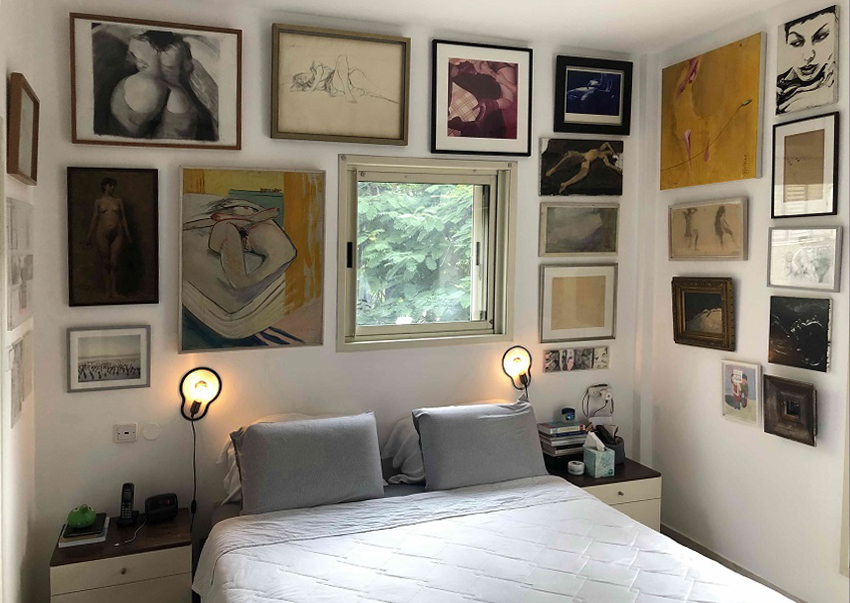
The last artwork added to the collection
An important gouache painting by Zoya Cherkassky from 2003, titles Chad Gadya. The painting was inspired by the “Aachen Passover Haggadah”, created as part of her Collection Judaica (2001-2003).
The most valuable artwork in the collection
The term ‘valuable’ can be regarded in terms of financial worth, the artist’s importance or status, as well as the personal connection to the piece or the way in which it was added to the collection. So, this question can have several different correct answers. If we address financial worth and the artist’s status, I estimate Keith Haring’s works (bought in a New-York gallery in the nineties) are the most ‘privileged’. However, there are other works in the collection that are far dearer to us, due to the story behind them.
Hanging, displaying, and storing artworks at the home
Our collection includes around 200 artworks, about half of which are displayed in our apartment. Most of the works that are not currently displayed, due to lack of space, are stored. In addition, many works have been loaned to family members and friends so that they can also enjoy some art on their walls.
It’s important to mention that we were able to display a larger part of the collection in our previous apartment, even though it was smaller. Our new apartment has two extra rooms but less wall space to hang art on, and so we were forced to store many pieces we intended to display.
Our hanging method is quite fixed in relation to other collectors we know. Once an artwork meets the wall, we almost never take it down. The only changes we make is adding more artworks or moving the pieces that are already on the wall to make room for more.
Our tips for choosing an artwork:
Looking back, I can identify several guidelines which have led us in our years of collecting:
- Buy what you like and not what someone tells you to love or buy; the key phrase is “I don’t know art, but I know what I like”.
- Don’t let the financial aspect dictate your decisions, but don’t ignore it completely.
- If you share the collection with your partner, only buy art that both of you love.
- If possible, purchase directly from the artist and not through a gallery (unless it is a communal gallery); the reward is greater on all facets.
- Anyone can purchase art, it is only a matter of setting priorities. I once told someone I argued with on this subject: “you are wearing my last art acquisition”.
